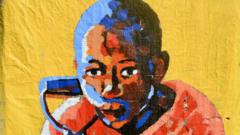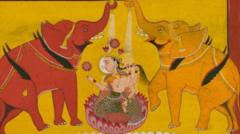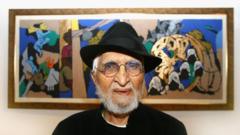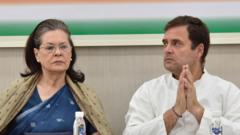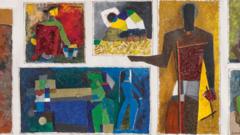On December 11, a judge granted police permission to seize artworks by the late artist MF Husain, known for his provocatively depicting Hindu deities, following a complaint by a lawyer who claimed the paintings hurt religious sentiments.
Court Orders Seizure of Controversial MF Husain Artworks in India
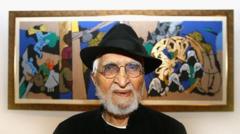
Court Orders Seizure of Controversial MF Husain Artworks in India
A Delhi court has approved the seizure of two of MF Husain's paintings that allegedly offend religious sentiments, reigniting debates on artistic expression in India.
In a striking move, a Delhi court has sanctioned the seizure of two paintings by the renowned Indian artist MF Husain, after claims arose that they were offensive. The controversial artworks, which displayed Hindu deities Ganesha and Hanuman alongside nude female figures, were part of an exhibition entitled "Husain: The Timeless Modernist" hosted at the Delhi Art Gallery (DAG). Complaints about the paintings came from lawyer Amita Sachdeva, who claims her research into Husain's past controversies steeped her decision to file a police complaint.
The case has reignited discussions around the limits of artistic expression in a nation where Husain’s work was already a flashpoint for tensions between traditional values and modern art. Although the paintings were reported missing from the exhibition, the DAG stated it is reviewing the situation while remaining uninvolved in the legal matters.
Notably, Husain, who passed away in 2011, was often revered as the "Picasso of India" but also faced backlash for his unconventional portrayals of Hindu gods. The complexities surrounding his legacy have been reflected in various legal battles over the years. In 2008, the Supreme Court of India had previously dismissed calls for action against Husain related to obscenity, asserting the artist's right to expression in a rapidly changing socio-political landscape.
The backlash against artistic freedom continues as demonstrated by recent incidents, including the Bombay High Court’s statement against customs authorities for seizing artworks labeled as obscene. Critics argue that censorship against artist expressions is on the rise, contributing to a growing climate of illiberalism in the country.
As the situation develops, the art community and legal experts watch with keen interest to assess how this landmark case may influence the future of artistic expression in India.
The case has reignited discussions around the limits of artistic expression in a nation where Husain’s work was already a flashpoint for tensions between traditional values and modern art. Although the paintings were reported missing from the exhibition, the DAG stated it is reviewing the situation while remaining uninvolved in the legal matters.
Notably, Husain, who passed away in 2011, was often revered as the "Picasso of India" but also faced backlash for his unconventional portrayals of Hindu gods. The complexities surrounding his legacy have been reflected in various legal battles over the years. In 2008, the Supreme Court of India had previously dismissed calls for action against Husain related to obscenity, asserting the artist's right to expression in a rapidly changing socio-political landscape.
The backlash against artistic freedom continues as demonstrated by recent incidents, including the Bombay High Court’s statement against customs authorities for seizing artworks labeled as obscene. Critics argue that censorship against artist expressions is on the rise, contributing to a growing climate of illiberalism in the country.
As the situation develops, the art community and legal experts watch with keen interest to assess how this landmark case may influence the future of artistic expression in India.

